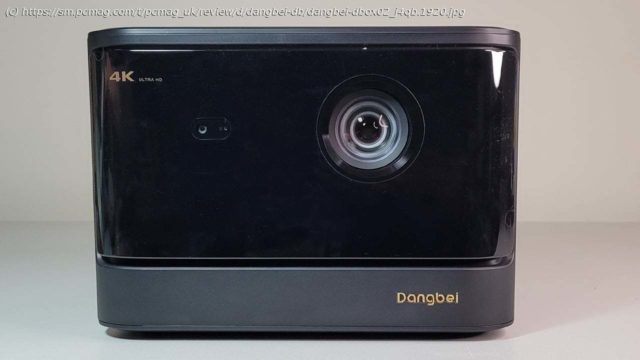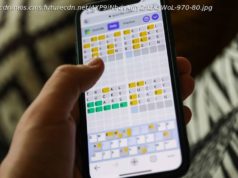A bright, vivid 4K image from a name you may not know
The Dangbei DBOX02 projector ($1,899) is best described as a work in progress. You can’t currently view 3D content, for example, but Dangbei says that problem will be solved in an upcoming firmware update, which will also include new features. Even the name has changed—from the Mars Pro 2 at its introduction—to avoid confusion with similarly named models from other manufacturers, according to the company. (That includes the Anker Nebula Mars II Pro, which actually isn’t a direct competitor.) That said, the DBOX02 is widely available for less than its list price, and it offers good brightness and picture quality straight out of the box. And while we still prefer the Hisense C1 as our top pick for a 4K room-to-room portable projector, the DBOX02 is good enough to be worth considering even before the firmware update arrives. Design: A Google TV-Powered Black Cube
The DBOX02 weighs 8.8 pounds and measures 6.4 by 9.3 by 7.9 inches (HWD). As with all of its direct competition, it delivers its 3,840-by-2,160-pixel image to the screen courtesy of a 1,920-by-1,080-pixel DLP chip and TI’s fast-switch pixel shifting. The chip is paired with an ALPD light source, a term that describes several light-engine designs from Appotronics. Dangbei says it’s the laser-phosphor version, which produces its primary colors using a laser and an RGB phosphor wheel. Dangbei rates the lifetime at 30,000 hours in Standard power mode.
Initial setup is typical for projectors that offer Google TV and automatic setup features like autofocus and keystone adjustment. Optionally connect image sources to one or both of the HDMI ports, power up the projector, and run through the standard Google TV setup, with a choice of Ethernet or Wi-Fi for connecting to the internet. Netflix users will appreciate that a licensed version of the app is already installed, along with some other common apps, including Amazon Prime Video.
The autofocus delivered a suitably crisp image in my tests, while the horizontal and vertical keystone adjustments didn’t always work well. However, our standard advice is to turn off automatic keystone adjustments and also avoid using the manual keystone and other digital adjustments—which include digital zoom and obstacle avoidance in the case of the DBOX02—since they can lower image brightness, introduce artifacts to some images, and even increase input lag, which is an issue for gaming.
Dangbei pegs the DBOX02’s brightness at 2,450 ISO lumens (equivalent to ANSI lumens). Based on the Society of Motion Picture and Television Engineers (SMPTE) recommendations, that would be enough to fill a roughly 185-to-255-inch image on a 1.0-gain screen in a dark room. In my tests, using my preferred settings for both SDR and HDR viewing and a 90-inch screen, the image was appropriately bright both in a dark room and in a room with a low level of ambient light.






